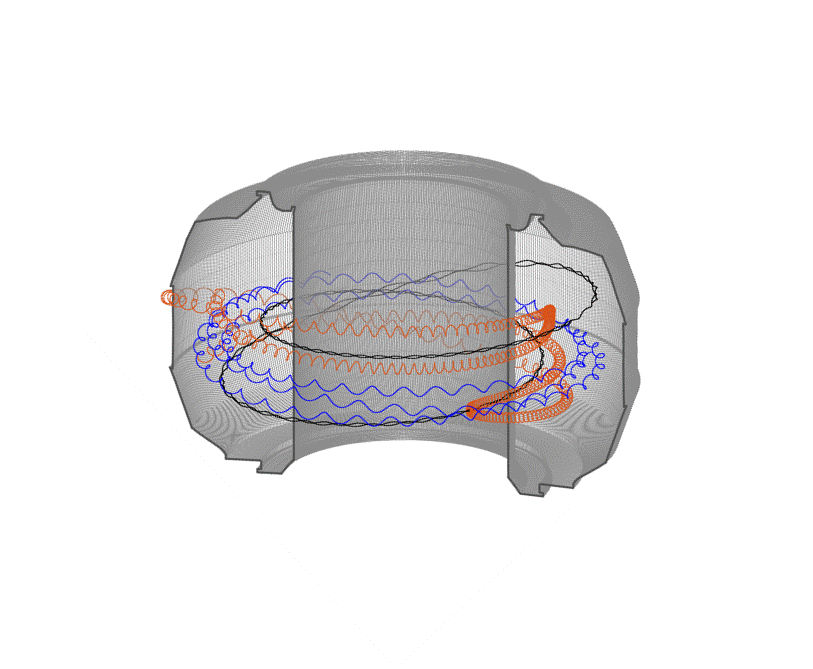
Filter News
Area of Research
- Advanced Manufacturing (4)
- Biology and Environment (54)
- Biology and Soft Matter (1)
- Building Technologies (2)
- Clean Energy (59)
- Climate and Environmental Systems (2)
- Computational Engineering (1)
- Computer Science (2)
- Energy Sciences (1)
- Fusion and Fission (19)
- Fusion Energy (10)
- Isotopes (4)
- Materials (18)
- Materials for Computing (3)
- Mathematics (1)
- National Security (16)
- Neutron Science (4)
- Nuclear Science and Technology (26)
- Nuclear Systems Modeling, Simulation and Validation (1)
- Quantum information Science (2)
- Supercomputing (33)
News Type
News Topics
- (-) Climate Change (72)
- (-) Cybersecurity (17)
- (-) Frontier (26)
- (-) Nuclear Energy (74)
- (-) Space Exploration (22)
- (-) Sustainable Energy (92)
- 3-D Printing/Advanced Manufacturing (73)
- Advanced Reactors (21)
- Artificial Intelligence (61)
- Big Data (44)
- Bioenergy (67)
- Biology (78)
- Biomedical (40)
- Biotechnology (14)
- Buildings (38)
- Chemical Sciences (35)
- Clean Water (27)
- Composites (17)
- Computer Science (127)
- Coronavirus (28)
- Critical Materials (16)
- Decarbonization (55)
- Education (1)
- Emergency (2)
- Energy Storage (60)
- Environment (147)
- Exascale Computing (28)
- Fossil Energy (5)
- Fusion (40)
- Grid (46)
- High-Performance Computing (56)
- Hydropower (11)
- Irradiation (2)
- Isotopes (32)
- ITER (5)
- Machine Learning (33)
- Materials (78)
- Materials Science (80)
- Mathematics (9)
- Mercury (10)
- Microelectronics (2)
- Microscopy (31)
- Molten Salt (6)
- Nanotechnology (28)
- National Security (42)
- Net Zero (10)
- Neutron Science (74)
- Partnerships (19)
- Physics (33)
- Polymers (17)
- Quantum Computing (25)
- Quantum Science (40)
- Renewable Energy (1)
- Security (12)
- Simulation (39)
- Software (1)
- Statistics (2)
- Summit (37)
- Transformational Challenge Reactor (3)
- Transportation (62)
Media Contacts

Scientists at the Department of Energy’s Oak Ridge National Laboratory are working to understand both the complex nature of uranium and the various oxide forms it can take during processing steps that might occur throughout the nuclear fuel cycle.

Oak Ridge National Laboratory is using ultrasonic additive manufacturing to embed highly accurate fiber optic sensors in heat- and radiation-resistant materials, allowing for real-time monitoring that could lead to greater insights and safer reactors.

Scientists have tested a novel heat-shielding graphite foam, originally created at Oak Ridge National Laboratory, at Germany’s Wendelstein 7-X stellarator with promising results for use in plasma-facing components of fusion reactors.

By automating the production of neptunium oxide-aluminum pellets, Oak Ridge National Laboratory scientists have eliminated a key bottleneck when producing plutonium-238 used by NASA to fuel deep space exploration.

Oak Ridge National Laboratory scientists studying fuel cells as a potential alternative to internal combustion engines used sophisticated electron microscopy to investigate the benefits of replacing high-cost platinum with a lower cost, carbon-nitrogen-manganese-based catalyst.

Scientists from Oak Ridge National Laboratory performed a corrosion test in a neutron radiation field to support the continued development of molten salt reactors.

As technology continues to evolve, cybersecurity threats do as well. To better safeguard digital information, a team of researchers at the US Department of Energy’s (DOE’s) Oak Ridge National Laboratory (ORNL) has developed Akatosh, a security analysis tool that works in conjunctio...

Fusion scientists from Oak Ridge National Laboratory are studying the behavior of high-energy electrons when the plasma that generates nuclear fusion energy suddenly cools during a magnetic disruption. Fusion energy is created when hydrogen isotopes are heated to millions of degrees...

As leader of the RF, Communications, and Cyber-Physical Security Group at Oak Ridge National Laboratory, Kerekes heads an accelerated lab-directed research program to build virtual models of critical infrastructure systems like the power grid that can be used to develop ways to detect and repel cyber-intrusion and to make the network resilient when disruption occurs.

A tiny vial of gray powder produced at the Department of Energy’s Oak Ridge National Laboratory is the backbone of a new experiment to study the intense magnetic fields created in nuclear collisions.


